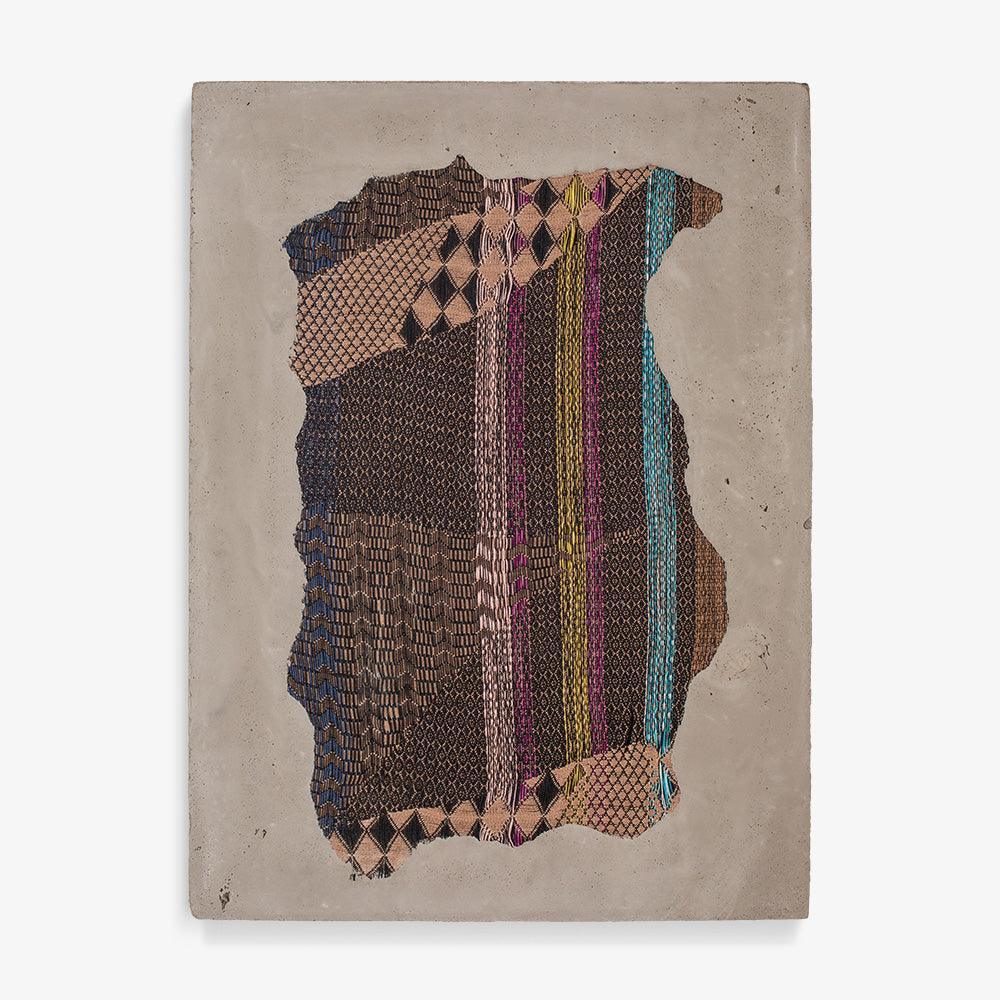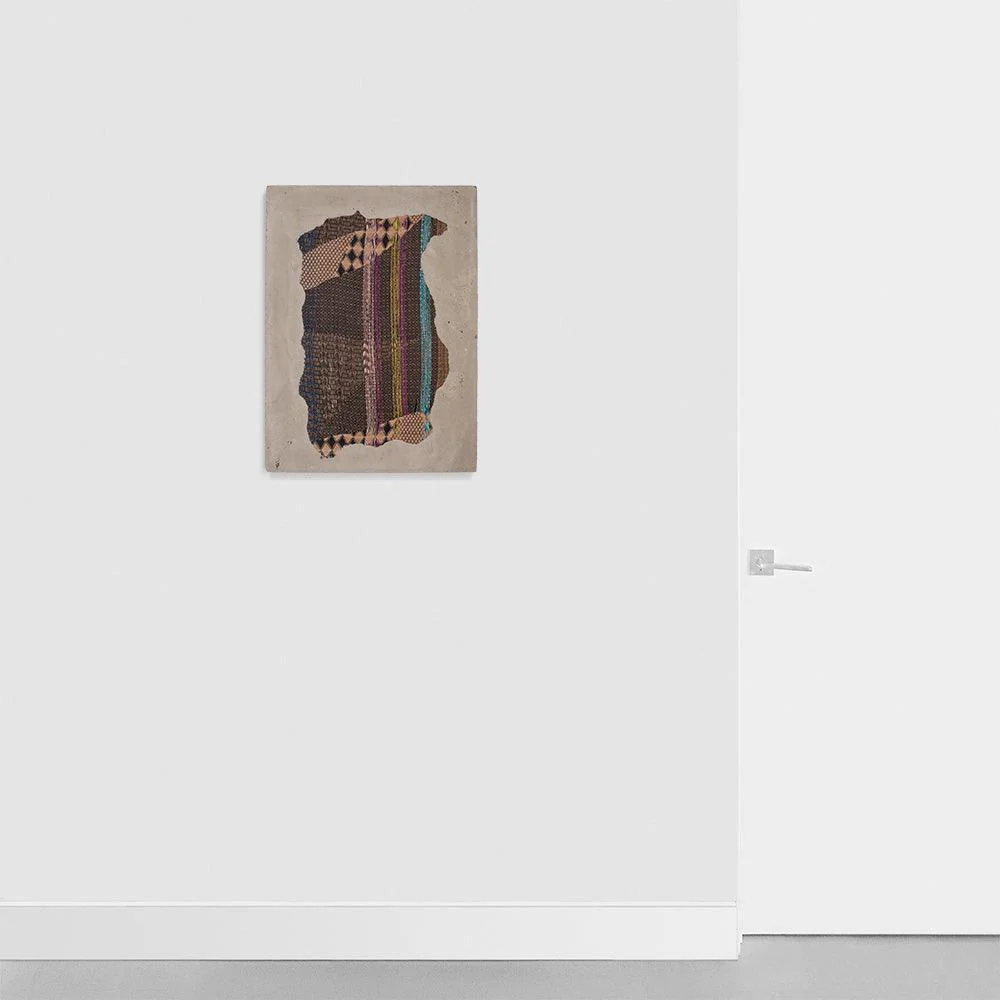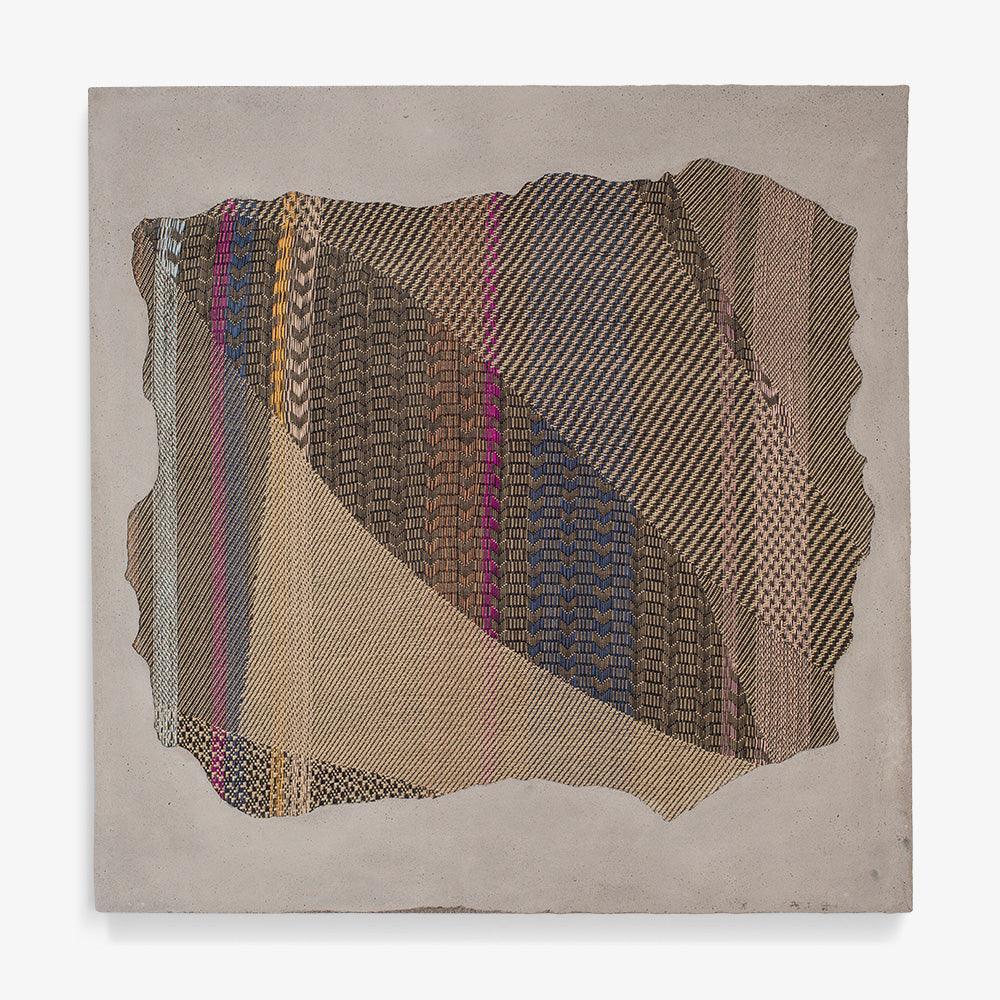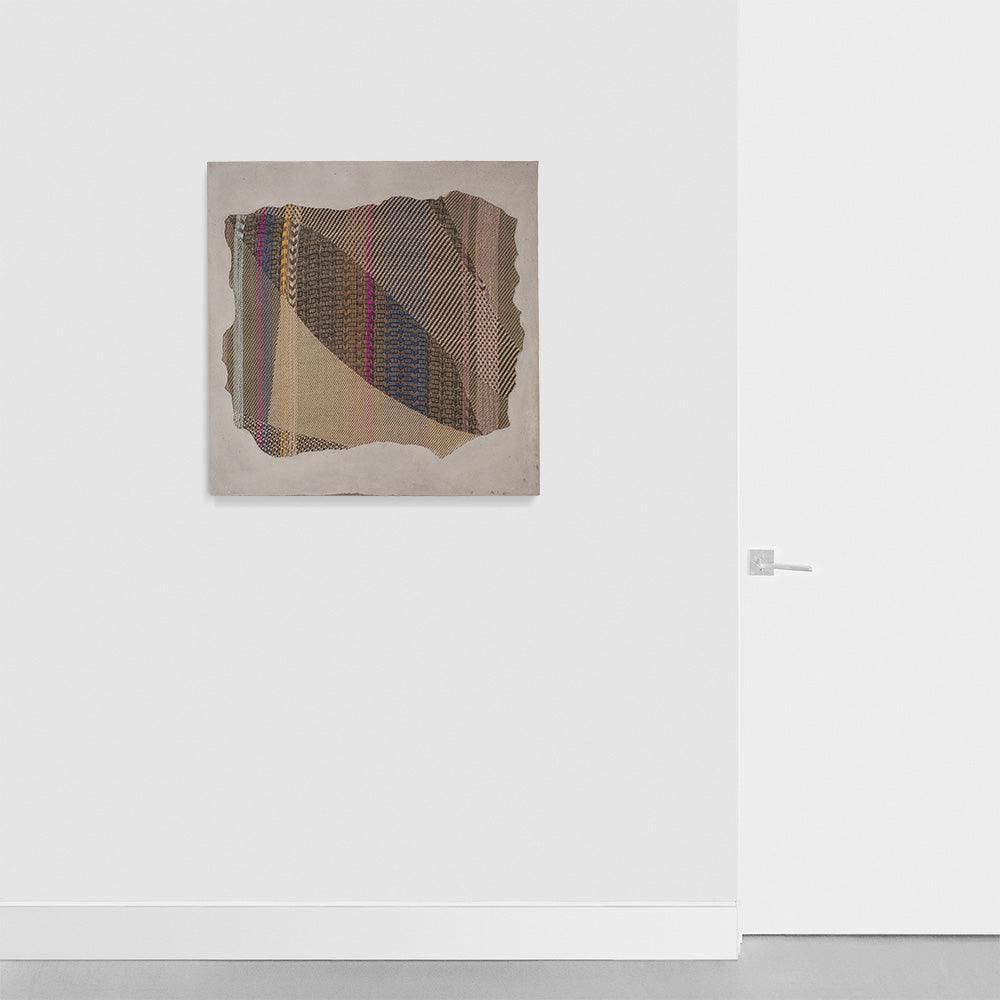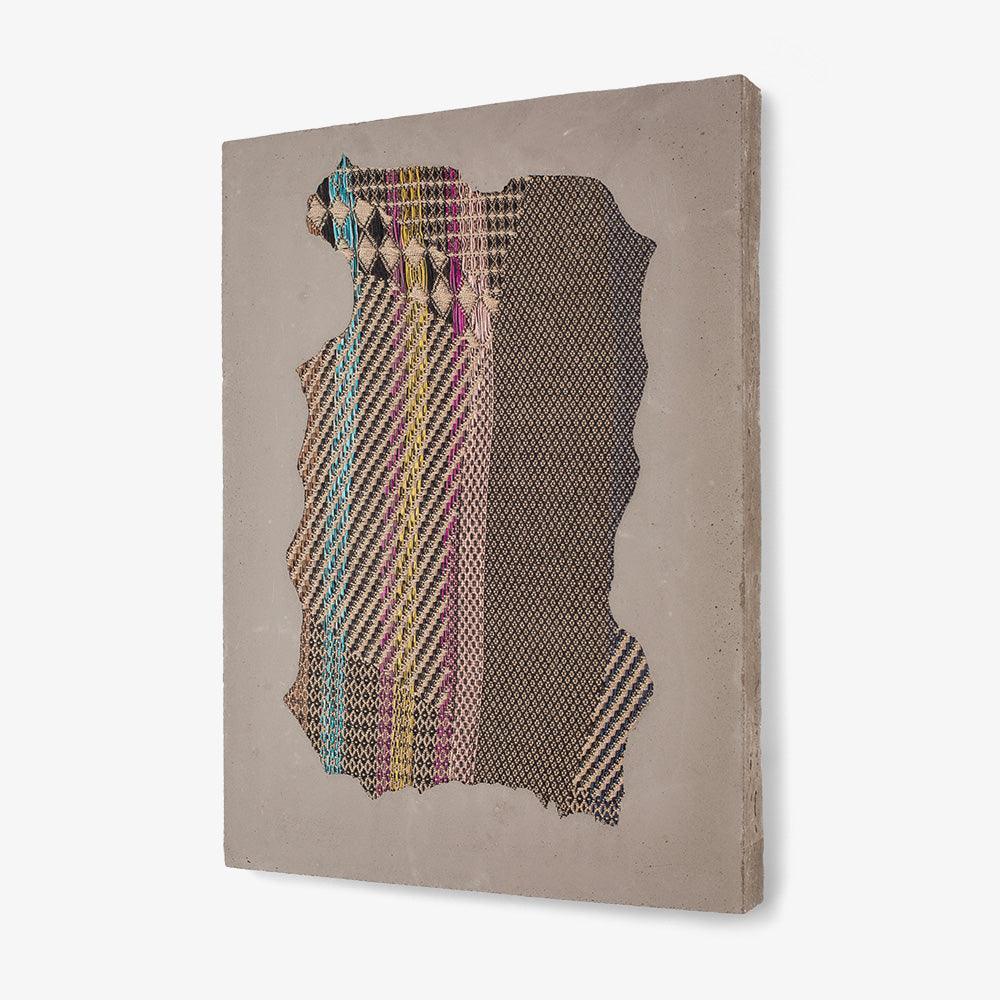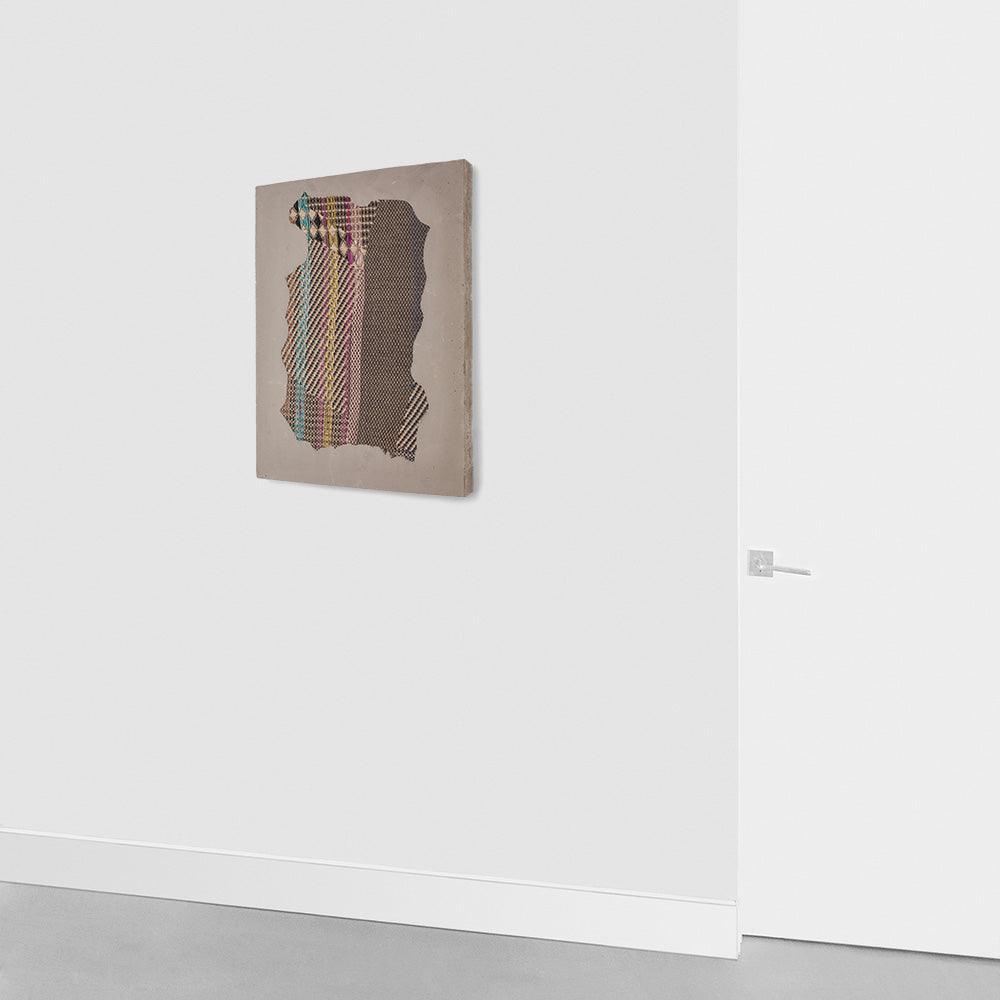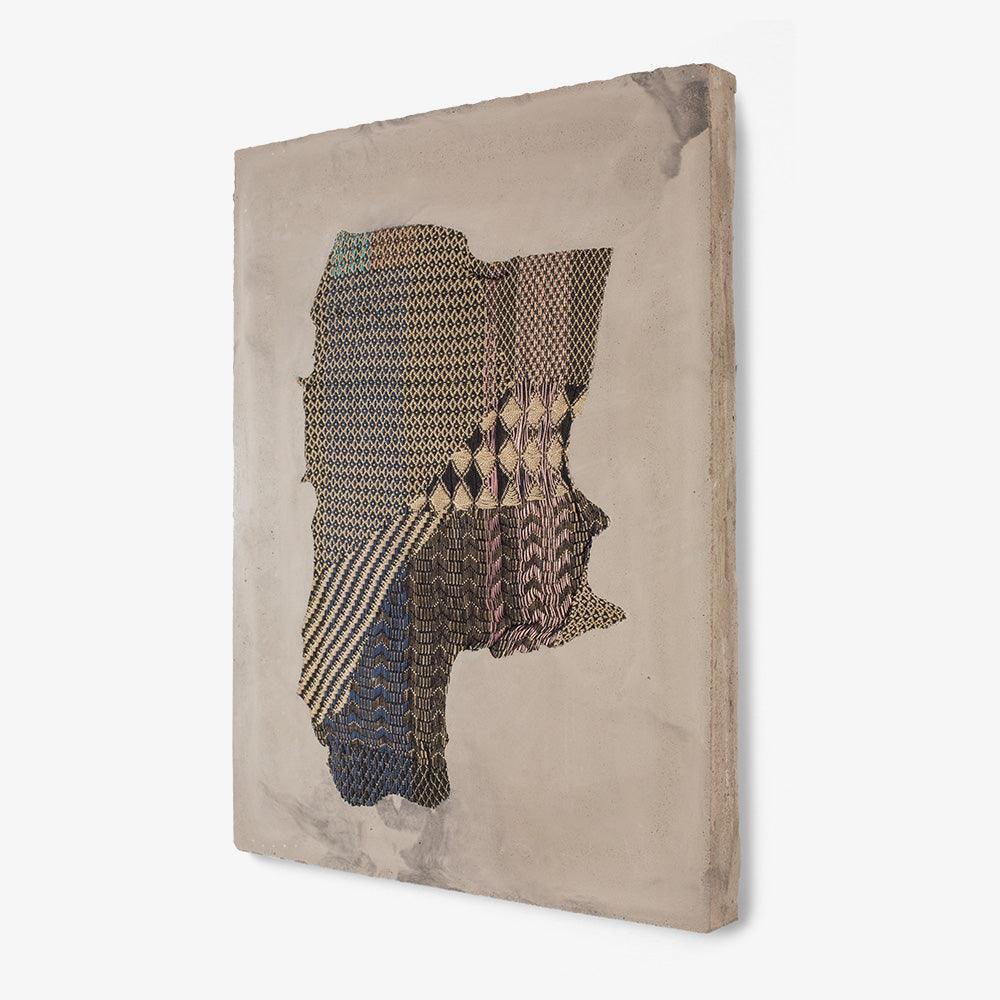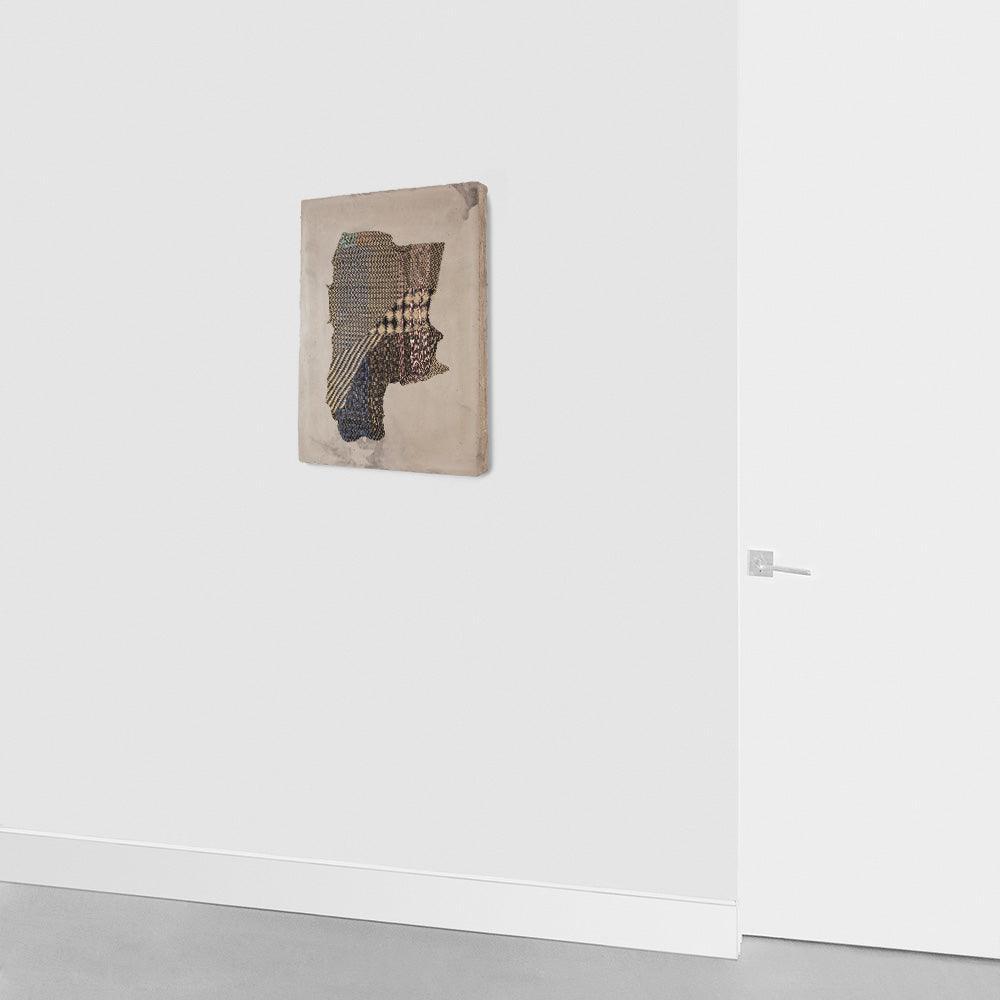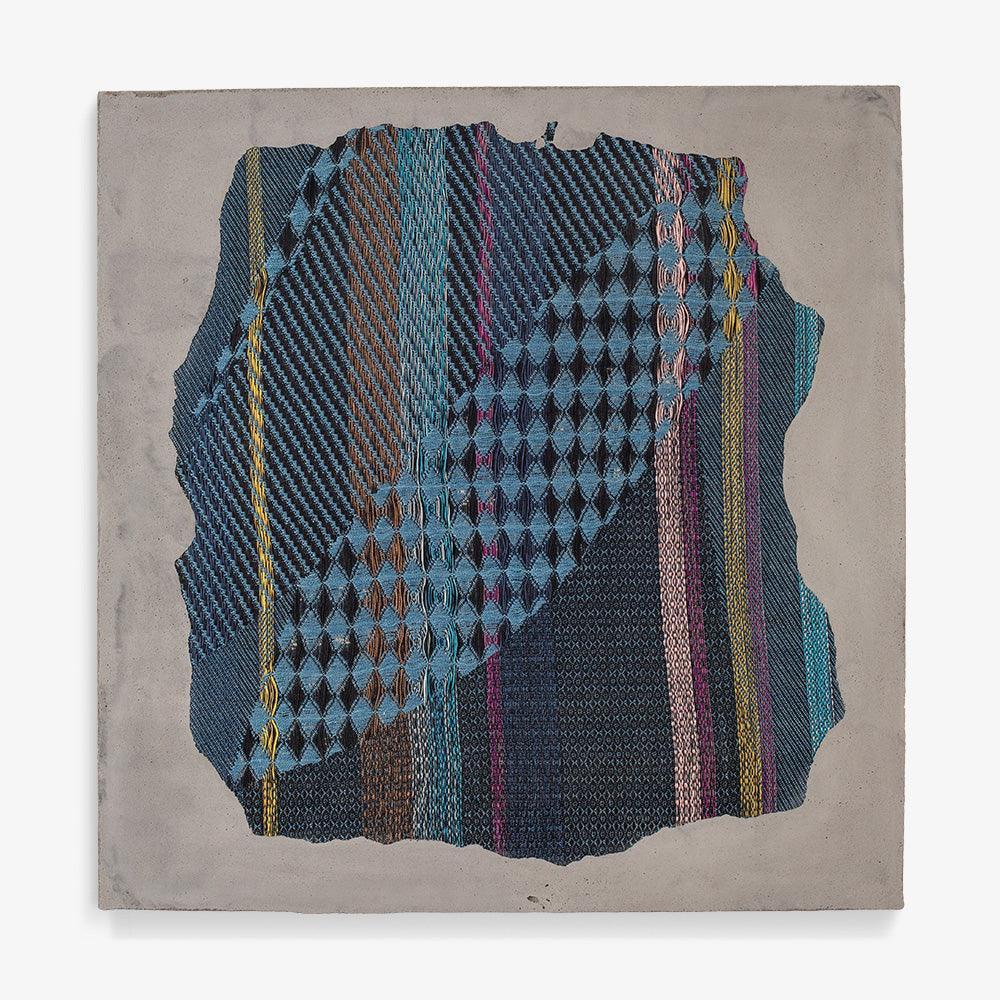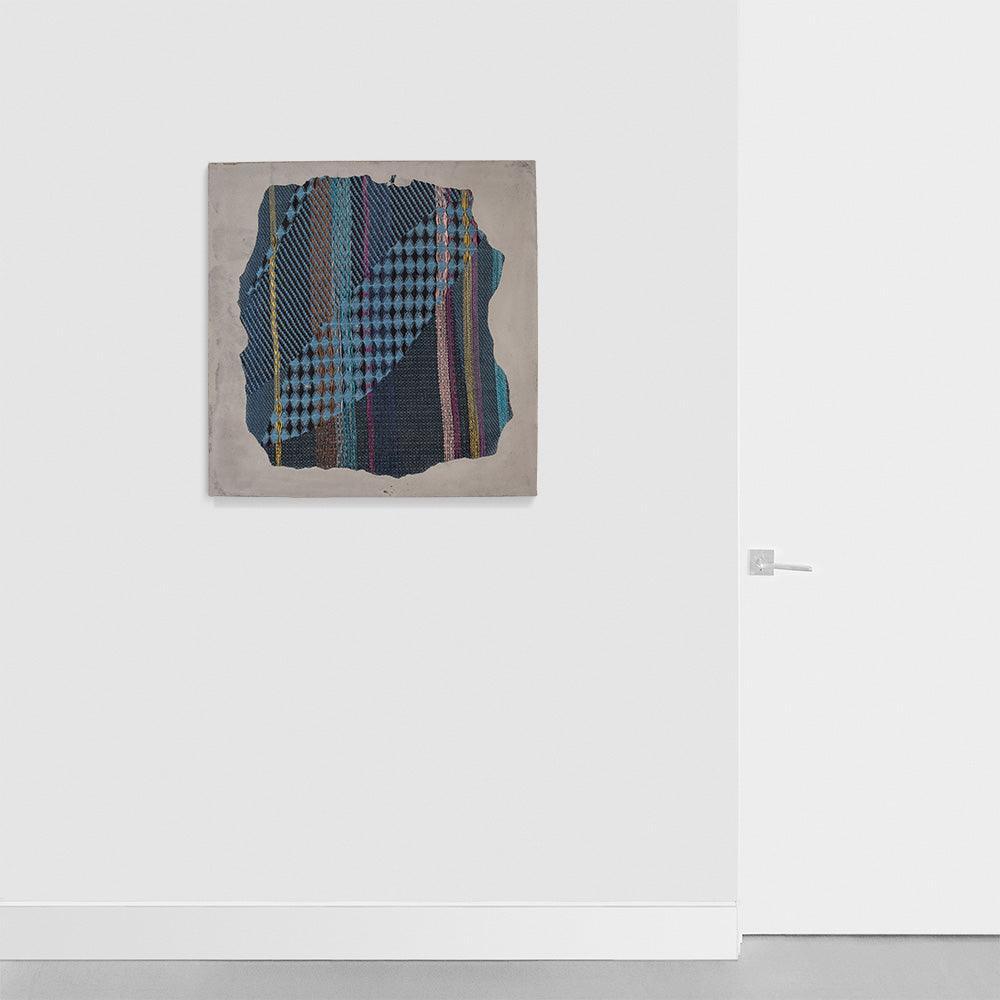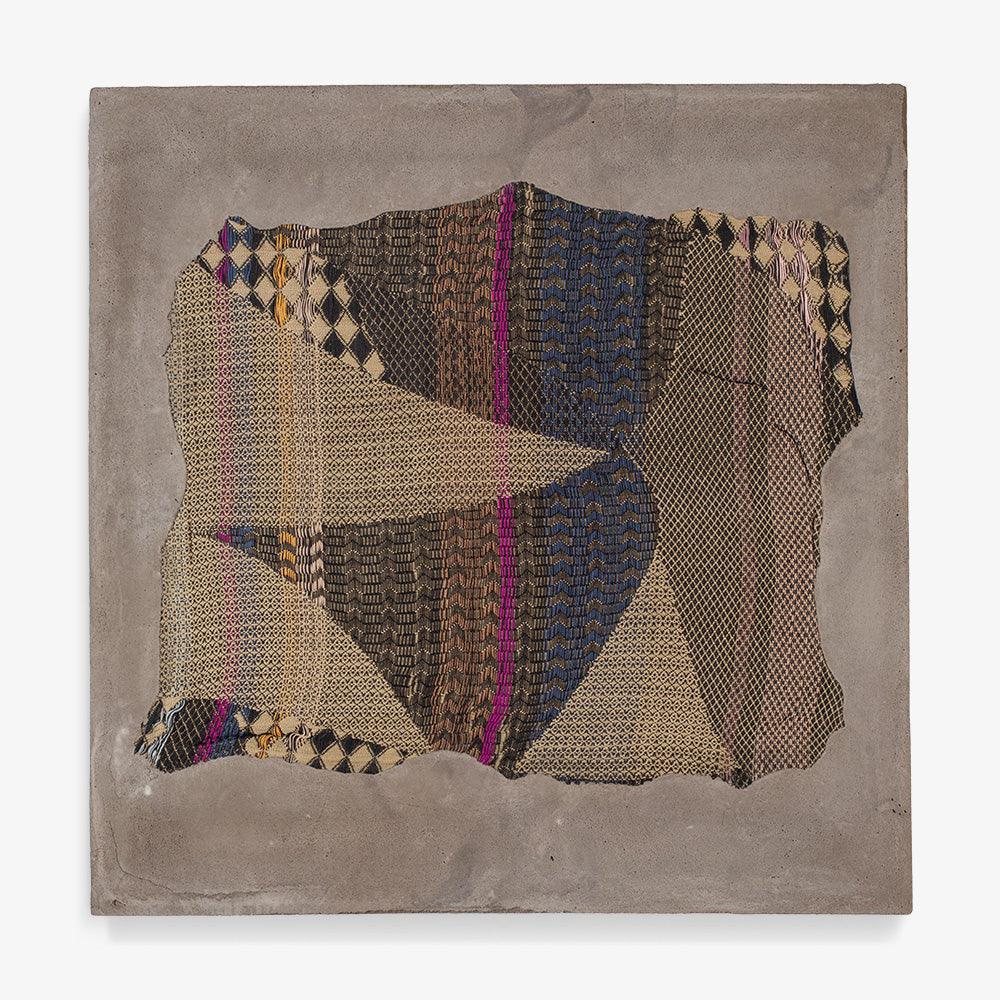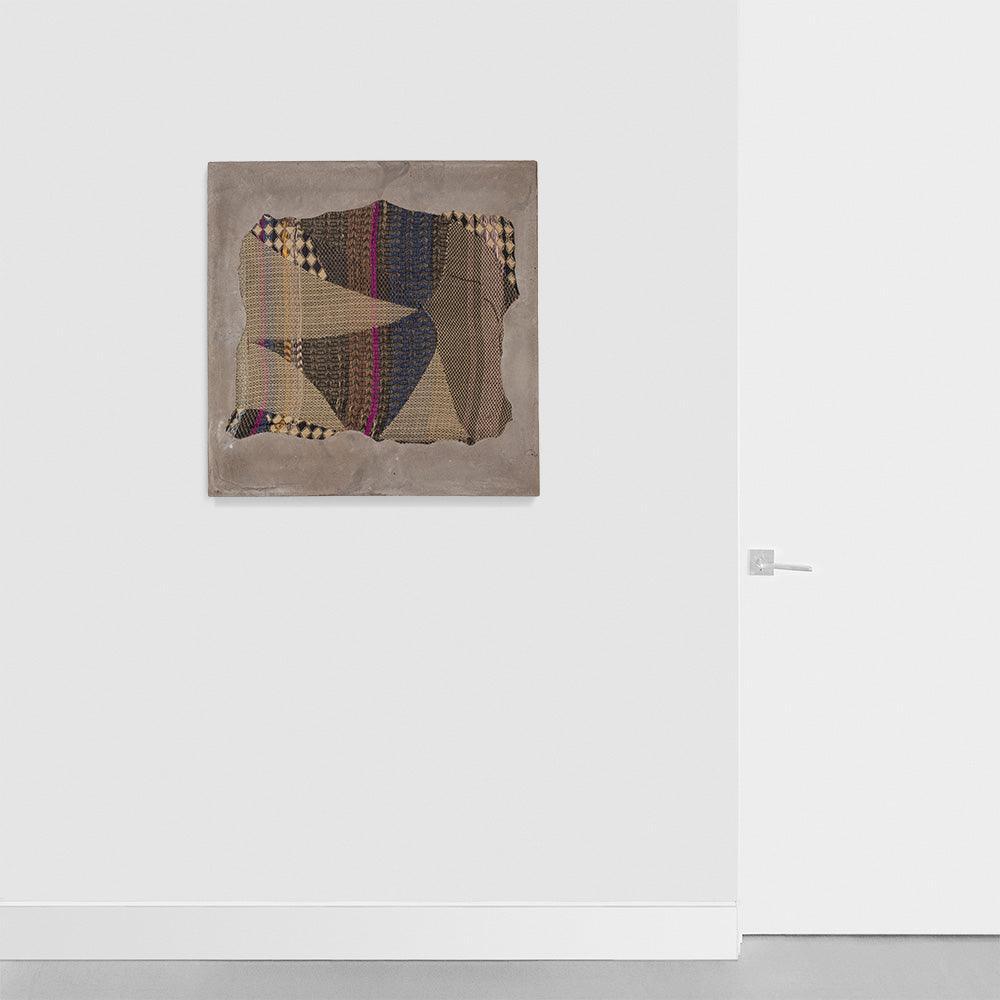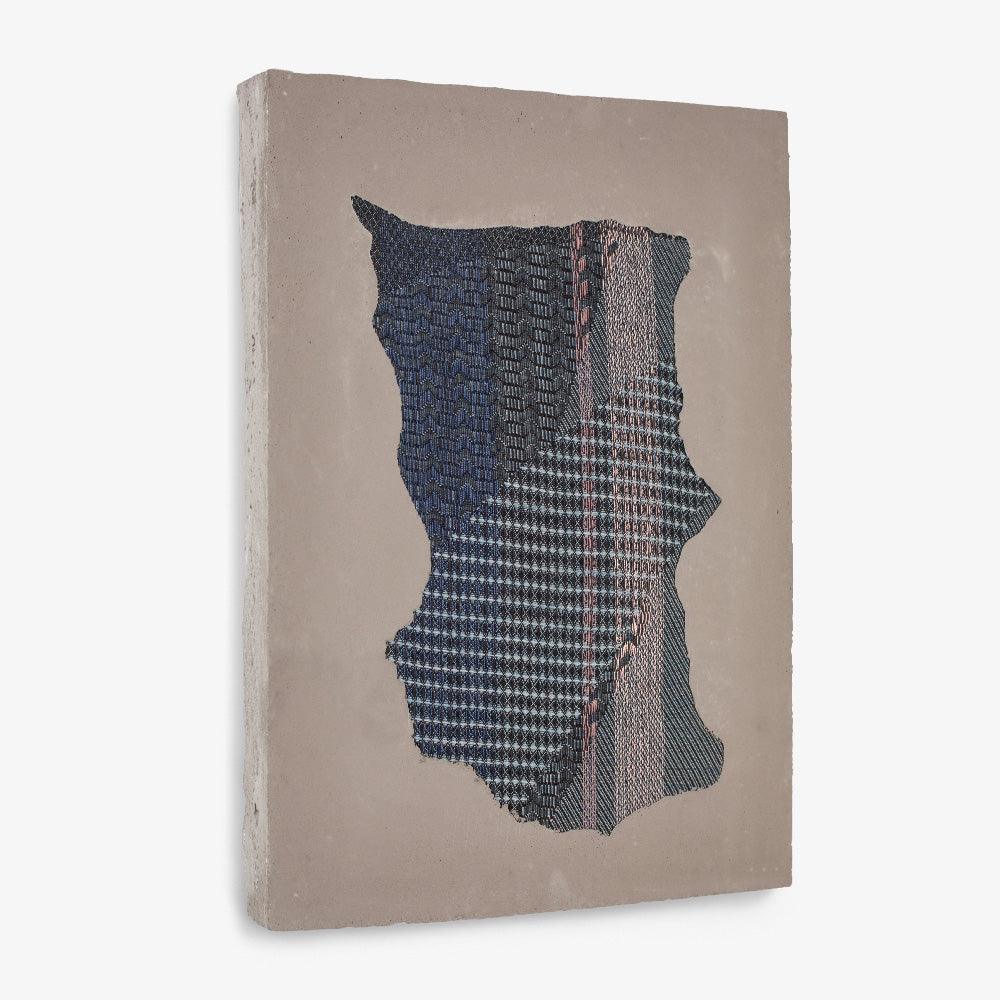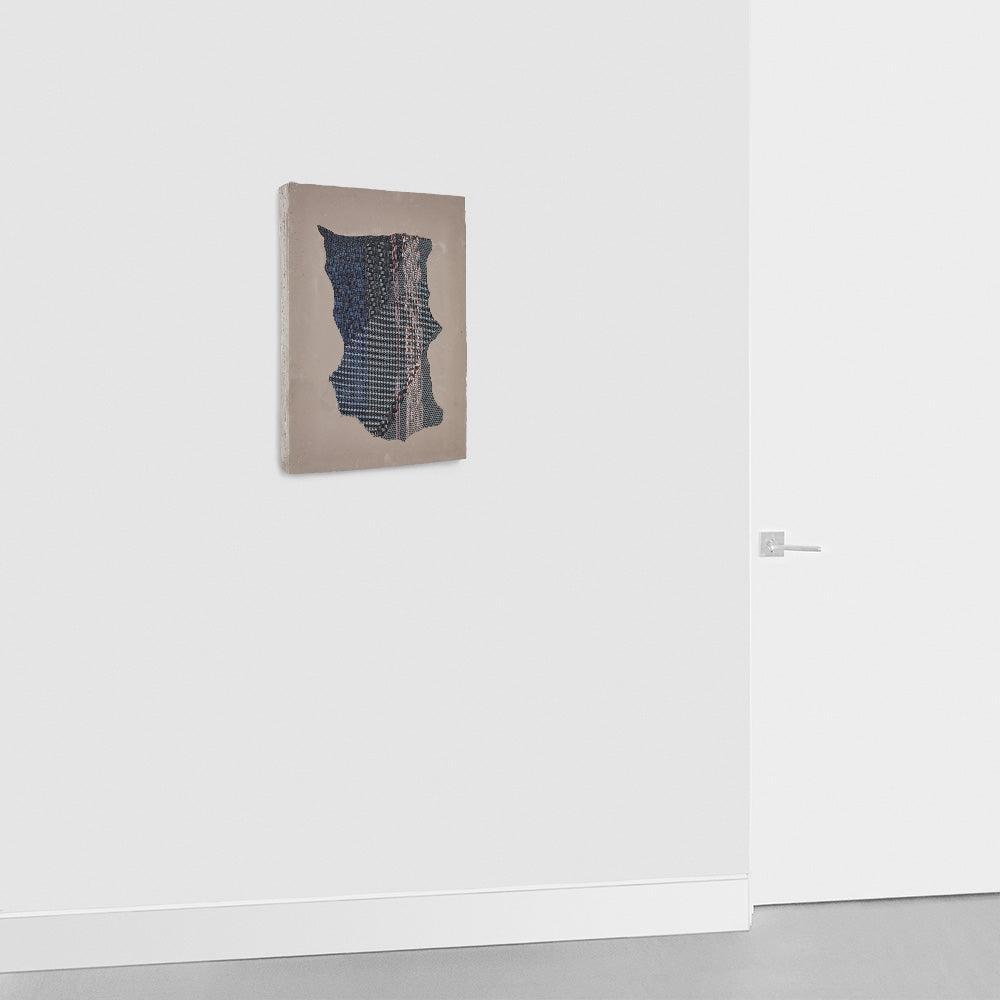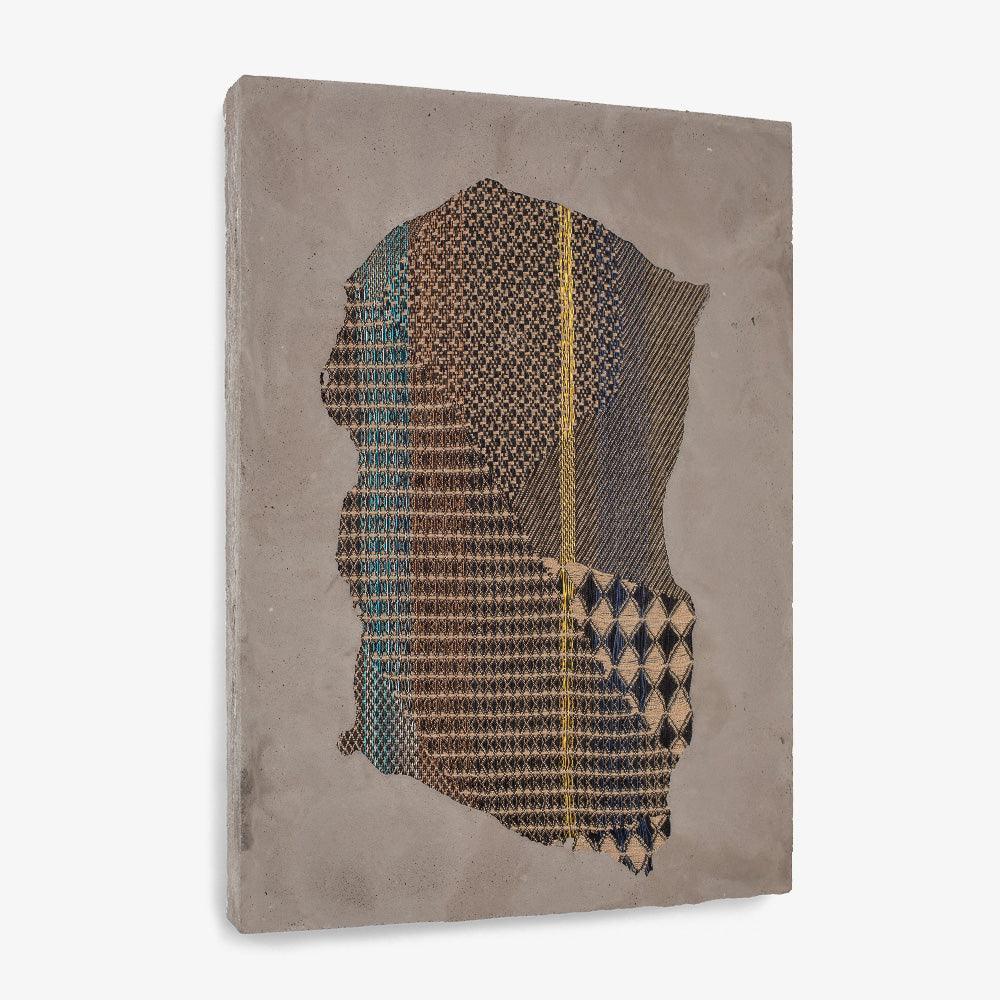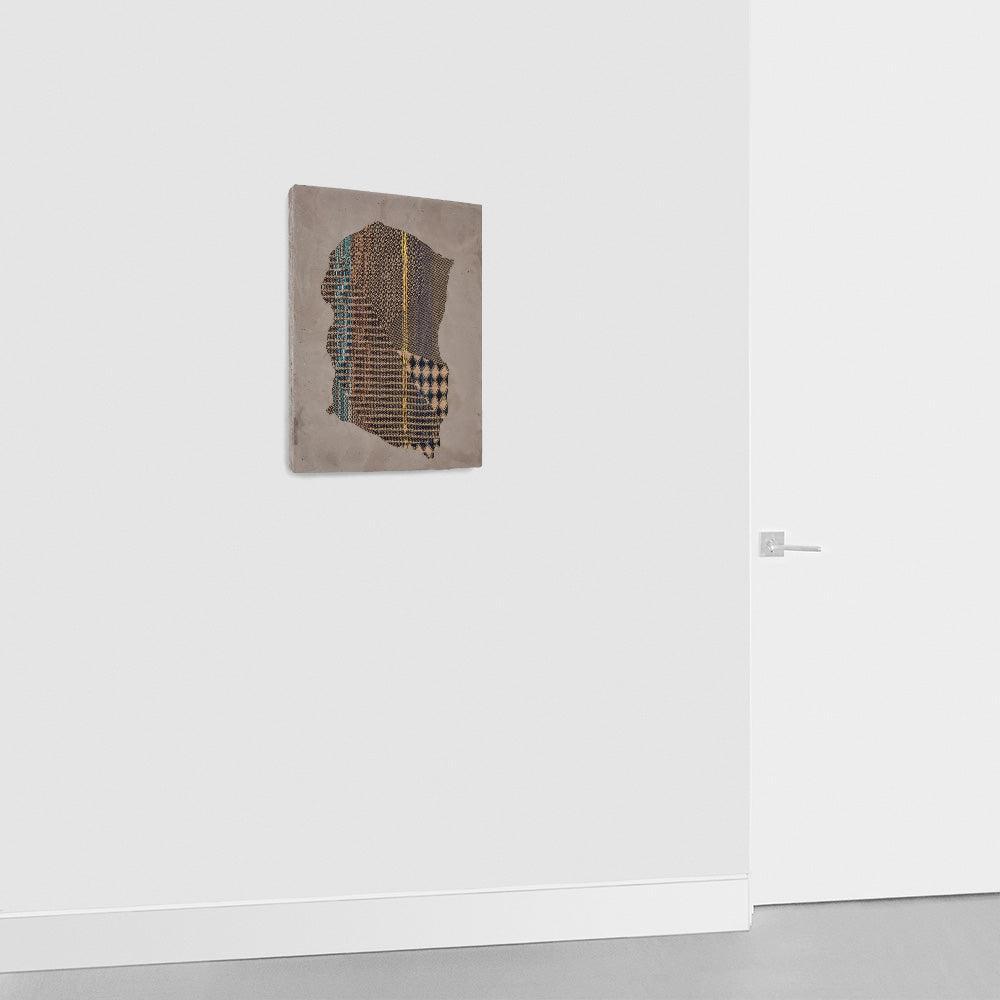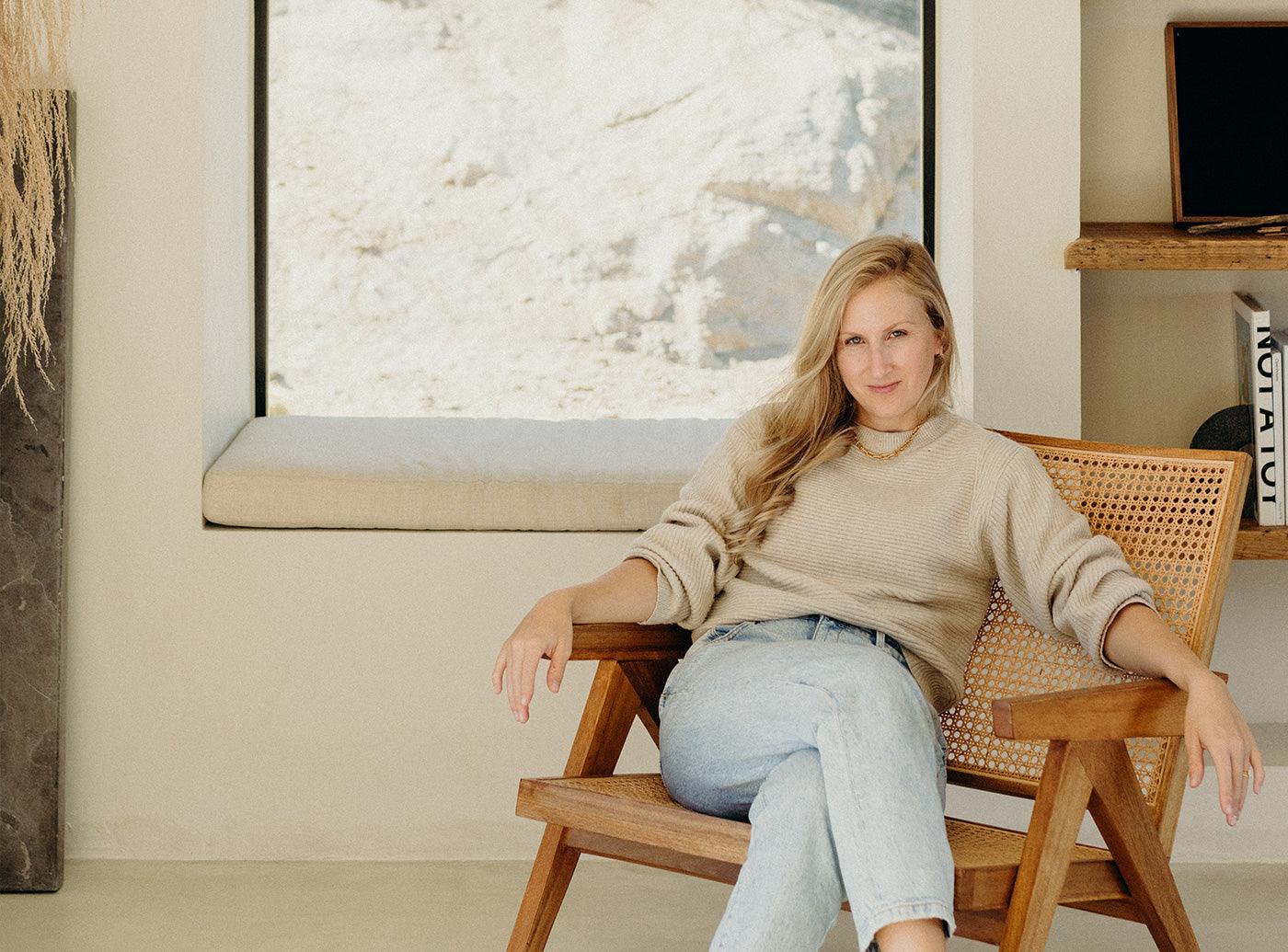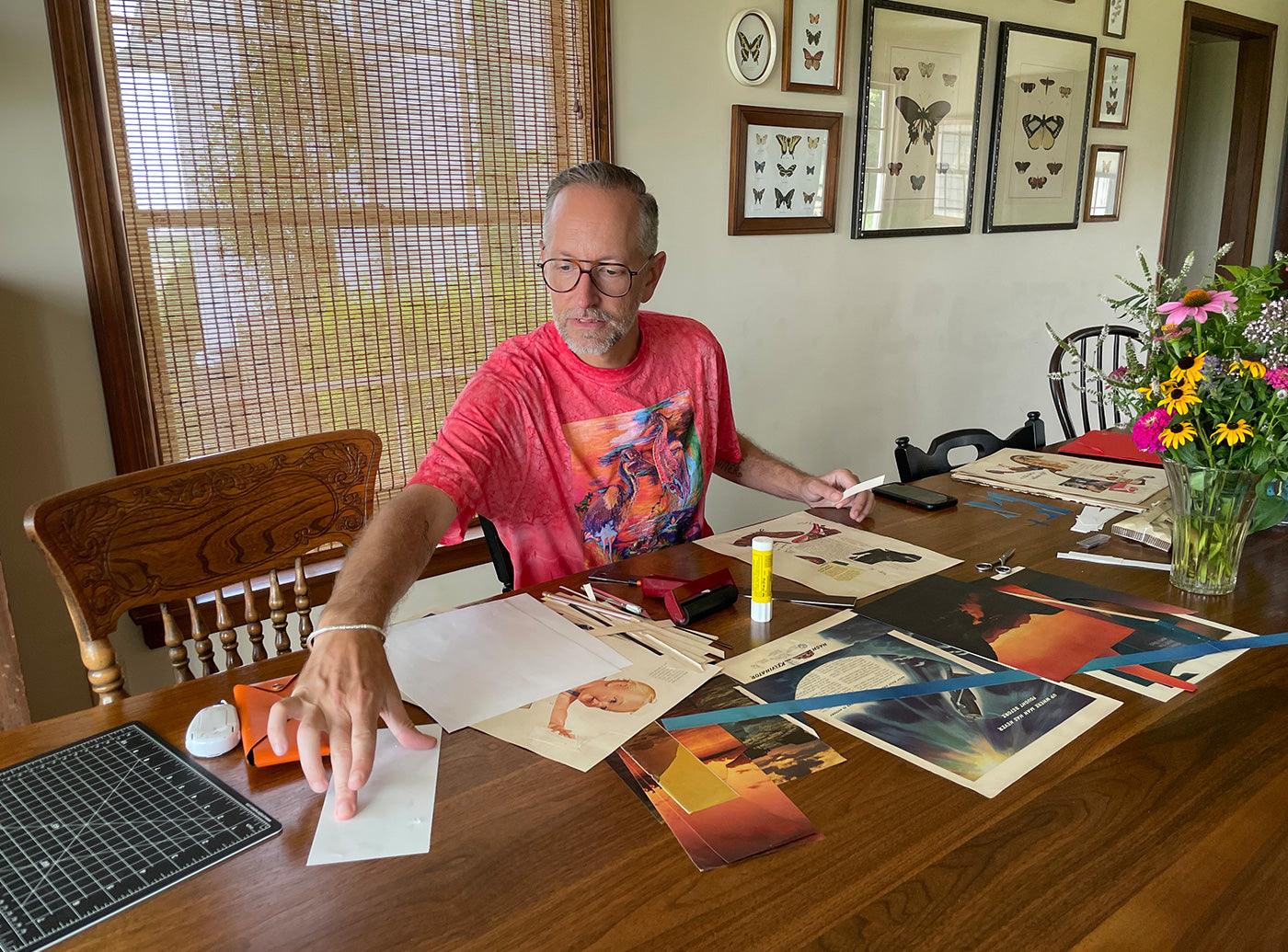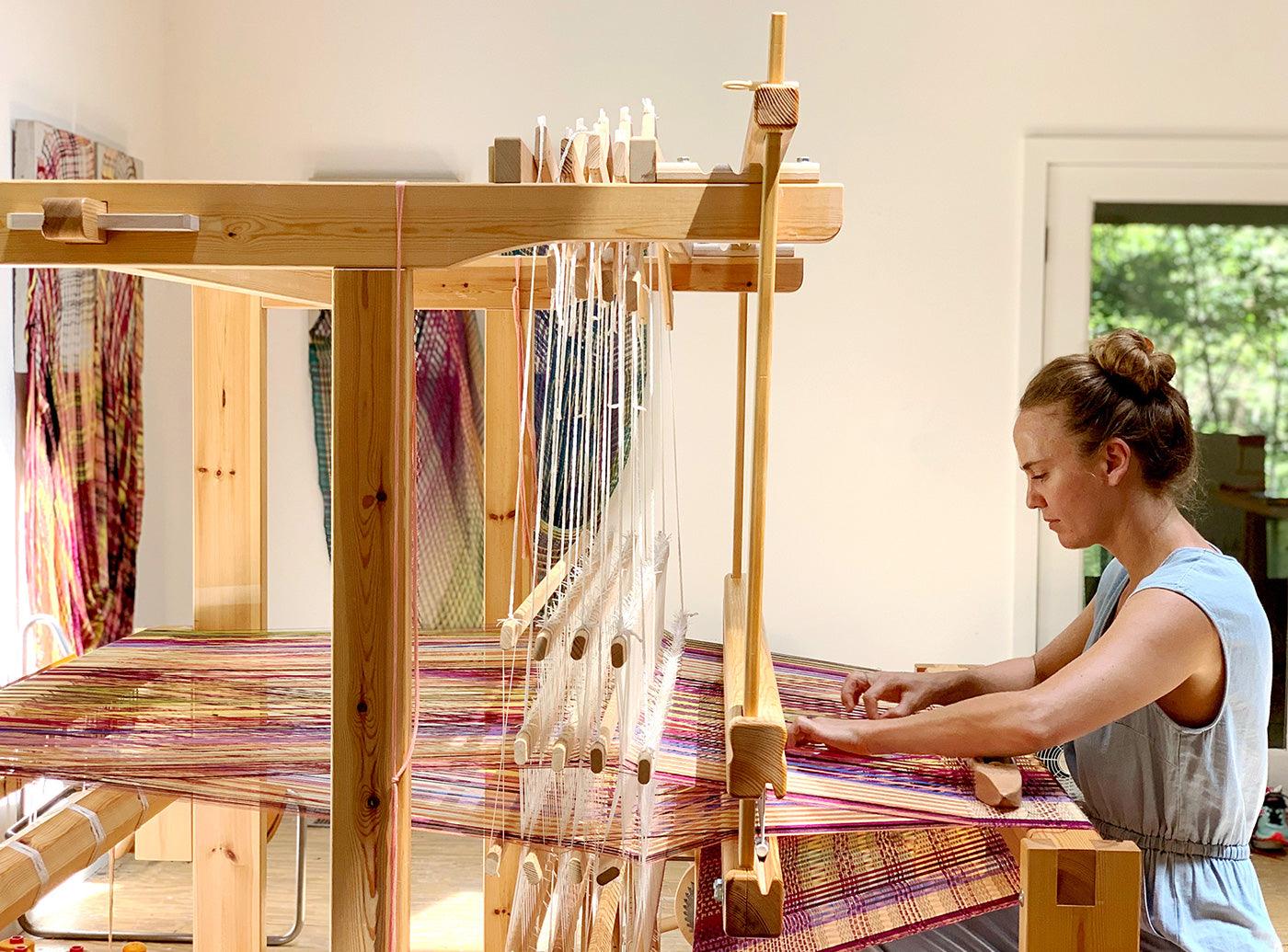
In the Studio | Crystal Gregory
Crystal Gregory's sculptures are quietly inquisitive, calling into question everyday associations. What is structural may, in fact, be pliable; buoyancy can be considered a strength. Weaving fabric from warp to weft, Gregory mimics the lines of architectural public space. Incorporating, and sometimes mimicking, traditional structural materials (think concrete, glass, and drywall) serve to conflate and expose our preconceived notions of what is strong, what is soft, what is permanent, and what is ephemeral. We talk to this multidisciplinary artist about process, perception, and the intersection between art and architecture.
TAPPAN
Tell us about yourself and how you came to be an artist.
CRYSTAL GREGORY
I have always been curious about and driven to make things. When I was 18 I moved from my parents’ home in Southern California to Big Sur on the central coast. There I met artists making music, poetry, performances, and woven fabric. It was there that I fell in love with the process and structure of weaving, but it wasn't until I moved to New York City that I understood being an artist as an identity, a career, and a lifestyle. New York City was a completely liberating and compelling place to spend my 20’s. The people I met and love there are driven and passionate and excited to pursue their dreams. This energy ignited a confidence in me that I hope to pass forward.
TAPPAN
Describe your work in three words.
CRYSTAL GREGORY
Textile. Sculpture. Structure.
TAPPAN
What draws you to textiles?
CRYSTAL GREGORY
The first thing I was drawn to in textile world was the community. Fabric is a basic human necessity. Because of this each culture around the world has their own processes and aesthetics used to make cloth, it is a functional utility, a common everyday material. I have been so fortunate to work with so many people across the US as well as in many different countries around the work all of whom have been incredibly generous with their time, their expertise, and their resources. It is a medium in which people come together to work, tell stories, and spend time together.
In western art history, fabric is drenched in ideas of the domestic, in histories of woman’s work and marginalized communities. I have witnessed this as a place of empowerment. I have found not only strength in community within fiber but also in the discourse running through it.
Crystal Gregory says:
“I AM CONSTANTLY RESPONDING TO WHAT WAS WOVEN IN THE FOOT BEFORE, ADDING COLOR AND TEXTURE AND PATTERN-FINDING A RHYTHM, LOSING A RHYTHM AND RESPONDING.”



TAPPAN
What is your creative process?
CRYSTAL GREGORY
This is a huge question, and I think there are many ways to answer it! I am choosing to talk more specifically to my woven concrete series than maybe other parts of my practice.
My woven concrete series embeds handwoven lace into concrete slabs. These works are material paintings, they hang on the gallery wall and invite the viewer to experience them as an abstract painting of brightly colored line and meandering grids. Yet they ask more of their viewing in their materiality, their utilitarian history, their surface, and their texture. Materials and their cultural associations lie at the core of my work and as I work to unpack the meanings of lace and concrete, I incorporate the inherent contradictions of these materials into the concept of each work. In contemporary culture concrete symbolizes strength, structure, and stability, yet without reinforcement it cracks and crumbles, revealing its inability to adjust. Textiles, on the other hand, are soft and pliable. They also exert strength though through tensile properties exerting flexibility and movement. My work rethinks these materials at the level of association and actively promotes the dismantling of such conventions to expose the symbolic construction, fictions and ideological investments underlying them.
I begin by winding a warp - this is the process of measuring each thread to the same length for weaving. I spend time choosing colors to create complex striped patterns. I then warp the loom spending time threading each thread and putting it under tension. At the loom, I weave intuitively. I only see about a foot of the woven cloth at a time. I am constantly responding to what was woven in the foot before, adding color and texture and pattern - finding a rhythm, losing a rhythm and responding. Once the weaving is complete, I release it from the tension of the loom and see the fabric for the first time. At this point the weaving becomes a completely different experience. I drape and fold, cut and compose until I have reached a composition that I believe complements the patterns and colors of the weaving. This part is a wonderful struggle. I strain to listen to the fabric, often getting frustrated, but somehow finding a posture that seems right. I then turn on loud music and start to combine cement, sand and water to make my concrete mix. The gesture of the folds and the surface of the fabric is moved by the pouring of wet concrete on the dry textile. I never know until the piece is cured if it will be a success. It is always a surprise.
TAPPAN
Where do you draw inspiration from?
CRYSTAL GREGORY
I am very much inspired by architecture and the built environment. I love walking around cities and admiring the different buildings. I often find myself mesmerized by construction sites; the colors and patterns, the movement and growth, and watching people work together. I think these experiences influence my work both formally as well as conceptually.
TAPPAN
What influence does living in Lexington, KY have on your work?
CRYSTAL GREGORY
Holding a professorship at the University of Kentucky, I am embedded in a truly wonderful community of artists and academics. I have a lot of space and support to make my work. Since moving here two years ago, I have been interested in Appalachian history, especially in relationship to weaving and in particular to overshot - a weave structure that utilizes a system of supplementary ‘floats’ to create complex patterns. I have begun to incorporate these patterns and weave structures into my art works. In spring of 2019, I worked with Miriam Kienle, a contemporary art historian and curator, on a project called Material Resistance. Over about a year we had many passionate conversations around feminism and craft and from these conversations she curated an exhibition for which I created a new work. What Binds Us, was a sculptural installation using woven fabric cast into concrete walls stretching 10ft x 9ft x 7ft. The pattern threads expended off the surface of the wall and were tied together to a facing wall exerting an expression of balance and support. Each thread in this 10ft work is tied together by local artists in a private performance. The act of tying together is a gesture of connection as we attempt to unpack ideas of resistance, tension, balance, and imbalance.
TAPPAN
What is your relationship with social media?
CRYSTAL GREGORY
Over the last year I have stopped using Facebook, but I totally love Instagram!


TAPPAN
What messages or emotions do you hope to convey to your audience?
CRYSTAL GREGORY
In my works I challenge myself not only formally and technically but as a thought exercise. I use handwoven fabric in combination with concrete, both materials drenched in collective experience. We know and understand these materials because they surround us in our everyday. Maybe because of this familiarity they are charged with specific identities; hard / soft, strength / pliability, cold / warmth. It is through our materials we come to understand these words; to wrap our experiences in them to use them in speech to express to one another. My work is to go deep into these understandings and try to tease out how they color our world, our relationships, and our attitudes.
Making to me is very personal and I think looking at art is as well. We all come to our present moment through our specific history of experiences. We use those experiences to understand the moment. My work, I believe, lives in a realm of universal experiences because of the materials I choose. I hope to draw attention to that by representing them to the viewer in an unfamiliar way, allowing for a re-recognition whatever that means to the individual.
TAPPAN
Who are some contemporaries or figures in art history who have influenced you?
CRYSTAL GREGORY
There are so many artists that inspire me! Anni Albers, Anne Wilson, Leonore Antunes, Carol Bove just to name a few.
TAPPAN
When do you make your best work?
CRYSTAL GREGORY
Each part of my day I feel is best for something. I typically use the morning for reading, writing, and research and the afternoon for making work in the studio.
TAPPAN
What do you listen to when creating?
CRYSTAL GREGORY
I love listening to audiobooks and podcasts while I am weaving or preparing the loom, but when I am mixing cement or building I listen to loud music.
TAPPAN
What influence does modern culture have on your work?
CRYSTAL GREGORY
I have been thinking a lot about how our modern culture has been more and more dedicated to the idea of practice. From studio practice to a physician’s practice or a meditation practice. I feel very connected to approaching life and art making in this way. It is about endurance, the process and all that goes into it over the finished object or finished work.
TAPPAN
What makes you laugh?
CRYSTAL GREGORY
My sisters and my nieces.
TAPPAN
What makes you nervous?
CRYSTAL GREGORY
Global warming, racism, sexism, xenophobia, all forms of hatred.
TAPPAN
What makes you excited about the future?
CRYSTAL GREGORY
I believe we are at a really important time in the history of our country and the world. I also believe although it feels slow and often backwards we have some really strong and powerful momentum forward. We all need to focus and come together now more than ever.




